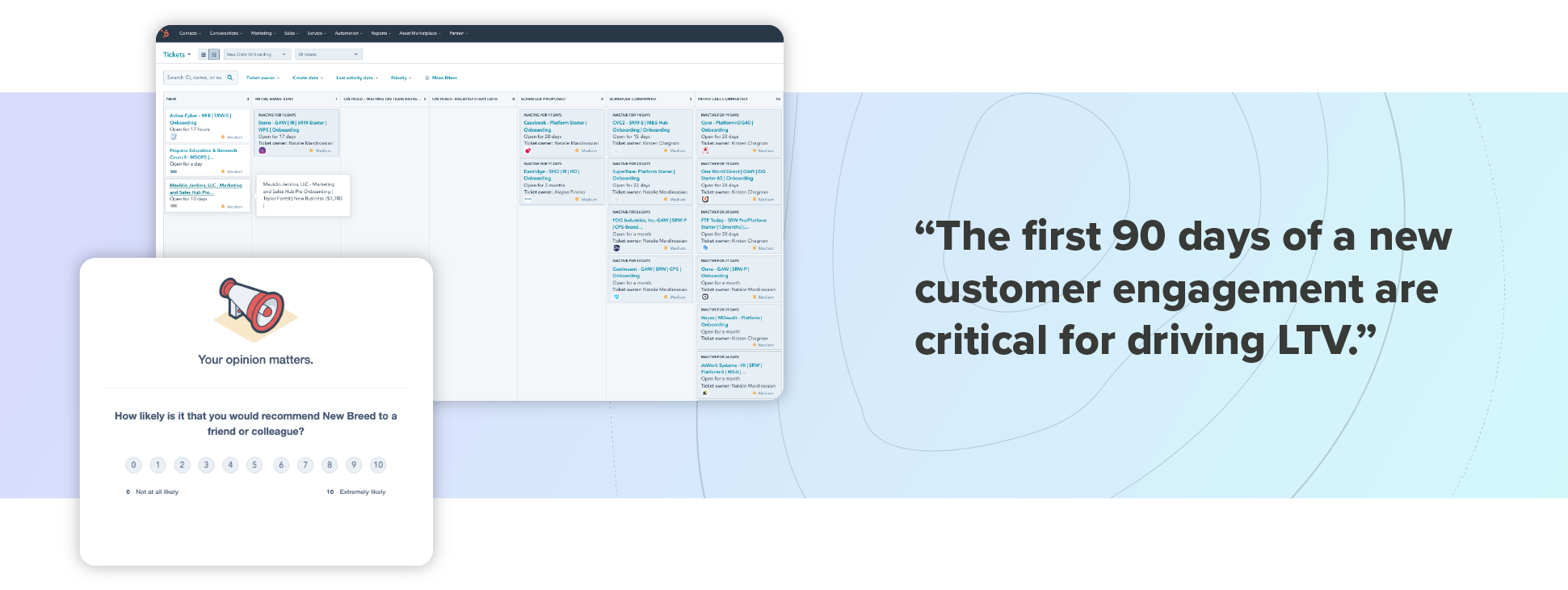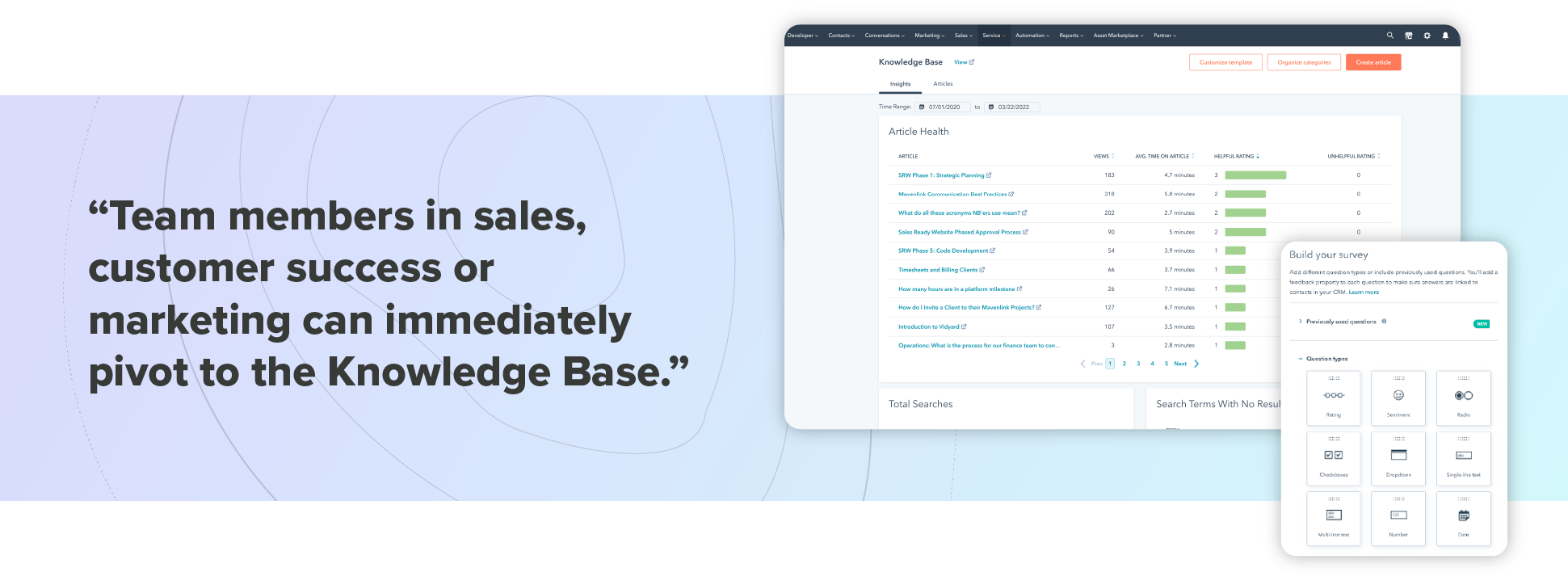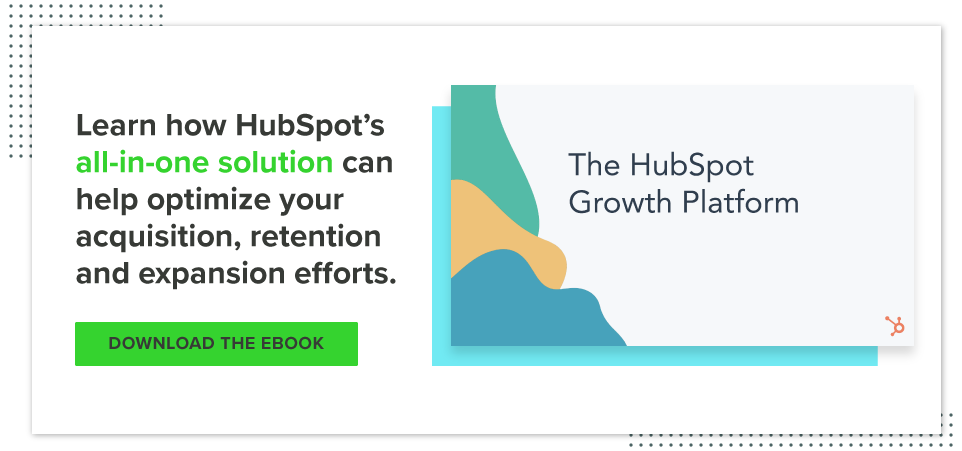How Marketers Can Drive Retention and LTV Using HubSpot Service Hub
HubSpot’s maturation into an enterprise-grade CRM – and its recent investment into Service Hub in particular – has made it easier than ever for customer-facing teams to craft a unified customer experience. By combining customer activities into one “pane of truth,” with consistent definitions, properties and UX design, leaders across your organization can better understand customer motivations, expectations and challenges.
However, as every marketer knows, there’s a difference between merely understanding the potential of unified customer data and actually reaping the rewards of expansion revenue on customer LTV — a metric on which we are increasingly measured.
Similarly, it can be a challenge to distinguish “nice to have” features and Hubs from those that will really move the needle. This is especially true for SaaS leaders when evaluating whether HubSpot Service Hub makes sense for their business, given the flexibility of its feature set.
With that in mind, the following list summarizes key opportunities that Service Hub can unlock to drive your retention and expansion strategy, along with use cases that we have applied both across our business and with high-growth clients.
Service Hub’s unified data and flexible ticketing dashboards allow you to perfect your sales-to-service handoff
Whether you’re in a product or service business, the first 90 days of a new customer engagement are critical for driving LTV. Research shows that a poor onboarding experience could cause businesses to lose up to 80% of customers within the first week, and the onboarding experience impacts service retention rates.
Many businesses use checklists, service-level agreements (SLAs), a client intake email sequence and a clearly documented onboarding process. Through HubSpot Service Hub, you can aggregate and centralize all these foundational materials while tracking each stage of the onboarding process.
Real-world example:
New Breed takes this approach through a ticketing dashboard that tracks new client progression from sales to service delivery, ensuring that our customer-facing teams have 100% of the context they need from day one — when the stakes are often highest. The context we get from this dashboard also ensures steps aren’t missed and clients aren’t forced to repeat the same information multiple times (an issue that can immediately undermine trust and credibility).
From a marketing perspective, this visibility also makes it possible to engage new customers with customer-specific insights, “surprise and delight” materials and timely resources like onboarding and enablement kits that help deepen customer closeness. Since implementing this approach, we have been able to continuously improve and streamline the process, allowing us to dramatically reduce overhead costs associated with onboarding.

Service Hub provides a unified view into customer touchpoints, so you can better nurture expansion opportunities and add value with every marketing touchpoint
Once you’ve onboarded your customers, HubSpot Service Hub allows you to assess and track each of their interactions with your business. This process offers a level of insight that, up until relatively recently, required multiple disparate systems and extensive manual effort to attain. Service Hub makes this easy to configure to your unique needs, all while remaining connected to the same toolkit where you conduct marketing and sales activities.
Real-world example:
At New Breed, we leverage the “ticket” view to proactively create a card for every customer, and organize the cards based on customer segment. If a customer experiences friction in their engagement with us, the activity is logged and tracked in the form of escalation tickets. Similarly, if a customer is approaching a renewal or other key inflection point in our engagement, we can use this dashboard to identify the right course of action to meet their expectations or deliver added value.
In all cases, having a clear window into client sentiment, how they’re being serviced, and what communications they’ve been receiving across their team allows marketing and sales stakeholders to serve them better. Furthermore, it eliminates the dreaded “redundant” communications that lead to email list “unsubscribes” and, ultimately, churn risk. This benefit is especially important today, as research suggests that 70% of consumers believe that they should not have to repeat information to different representatives at a company.
Service Hub Knowledge Base can be leveraged internally to transform “tribal knowledge” silos into unified success strategies
Most companies have some form of internal “wiki” or knowledge center that houses internal process documentation, best practices, organizational charts, training tools and countless files. Much of this “tribal knowledge” is valuable, but as companies grow it quickly becomes outdated, cumbersome to manage and siloed across the business.
By integrating its Knowledge Base into the core CRM, HubSpot Service Hub helps you avoid this issue. While a primary application for Knowledge Base is to provide a self-service resource for your customers, it can also be leveraged internally to drive cross-functional alignment. This approach can be particularly valuable for b2b and SaaS organizations seeking to better align product, client success, and sales teams.
Real-world example:
At New Breed, we made the decision early on to use Knowledge Base as an internal tool. We saw immediate adoption as our teams quickly began to not only rely on the knowledge, but appreciate its proximity to the rest of the Hubs where they spend their time.
Team members in sales, customer success or marketing might spend their working time in a given Hub, but can immediately pivot to the Knowledge Base to find relevant documentation. For example, a new sales rep may be in HubSpot Sales Hub composing a follow up email to a prospect, only to find that they need a case study. Through the integrated Knowledge Base, they can quickly source lists of relevant collateral along with internal documentation on how to put it to use — all without leaving the CRM.
For marketers, this ensures version control and proper usage of their materials. For sales, this creates efficiency and better, more valuable customer touchpoints. And that’s just one benefit of this integration. You can leverage it to deliver internal marketing campaigns, promote recently published assets and develop a full internal communications strategy — an ideal foundation to build cross-functional buy-in.

Service Hub’s intuitive NPS survey and automation provides real-time, immediately-actionable customer sentiment data
Brand and demand gen marketers have always relied on survey data to understand growth opportunities. But these traditional methods often yield a lag between the customer sentiment data you collect and your ability to take action on it. Similarly, as organizations scale, customer analysis can often get siloed within various pockets of the organization.
HubSpot Service Hub bridges this gap with a well-curated set of surveying tools that you can couple with firsthand, real-time customer interaction data and service analytics to form a highly actionable set of insights.
Real-world example:
At New Breed, we pay close attention to the NPS and CSAT survey data we run through HubSpot. This data is also connected to automation that triggers follow-up outreach across stakeholders — from service leaders to client points-of-contact, to marketers — to help us respond to challenges and opportunities alike. By activating marketing, sales and success workflows in real-time, we’re able to move in lockstep and leaders can trust that we are all seeing the same data together.
The data our marketing team is able to leverage at a glance in Service Hub also has a direct influence on retention and expansion initiatives. From product adoption trends to service delivery feedback, there is no substitute for direct customer input. With HubSpot continuing to invest in Service Analytics (and now launching several new reports as part of their recent Service Hub update) the level of insight will only increase, helping you inform everything from ideal campaign timing to overall messaging strategy.
Key Takeaways
HubSpot Service Hub can be an indispensable tool for your marketing and sales teams, and is ideally suited for high-growth companies facing challenges with internal knowledge “silos,” poorly-coordinated handoffs between teams, and high revenue expansion and retention targets.
Through its purpose-built features, a well-curated set of reports and a highly flexible interface, it delivers real-time insight into your customer experience as well as a simple but powerful Knowledge Base that you can also use to share and scale your institutional wisdom.
This combination drives the lockstep cross-functional alignment that marketers need to successfully deploy customer marketing campaigns, power expansion and improve customer retention. With many brand new, recently-released features, and continued investment planned across the Hub, its potential is only beginning to be realized.
Al Moore
Al is the Director of Marketing for New Breed. He has spent the last 15+ years as a B2B and SaaS marketer, and he is passionate about helping companies leverage the digital space to reach and engage their audiences effectively and efficiently.





